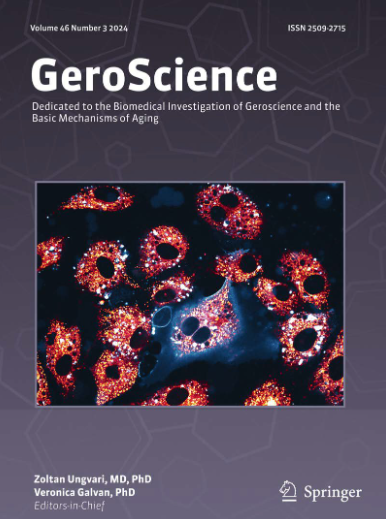吞咽康复疗法对吞咽困难成人的疗效:随机对照试验的网络荟萃分析
摘要
吞咽困难导致吞咽功能低下和吸入风险高;吞咽康复疗法包括下颌运动、舌运动、对抗阻力的下巴内收运动(CTAR)、振动训练、费力吞咽训练(EST)、传统吞咽困难疗法(TDT)和呼吸肌训练(RMT),包括吸气肌力训练(IMST)和呼气肌力训练(EMST),是吞咽困难康复的重要组成部分。然而,关于吞咽康复疗法在成人吞咽困难患者中的疗效比较的证据有限。这是第一项研究吞咽困难成人患者吞咽康复疗法疗效比较的网络荟萃分析(NMA)。在 2024 年 9 月之前,对 Web of Science、Embase、CINAHL、Cochrane Library 和 PubMed 进行了全面检索。在 R 软件中执行了频数主义 NMA 模型,显示了吞咽功能和吸入的标准化均值差异及相应的 95% 置信区间 (95%CI)。Cochrane Q、τ2 和 I2 统计量估算了异质性,完全设计-治疗交互随机效应模型和节点分割模型确定了反向性。使用 netrank 函数对吞咽康复疗法进行排序。搜索结果包括 7697 项研究,其中 25 项随机对照试验涉及 1020 名患有吞咽困难的成人。研究结果显示,CTAR + TDT(SMD = 3.44 [95% CI 2.42, 4.47])、EMST + TDT(SMD = 2.92 [95% CI 1.59, 4.25])、Shaker + TDT(SMD = 2.83 [95% CI 1.81, 3.84])、JE + TDT(SMD = 2.52 [95% CI 1.21,3.83])、TE + TDT(SMD = 2.19 [95% CI 1.26,3.12])、RMT + TDT(SMD = 2.14 [95% CI 1.36,2.93])和 TDT(SMD = 1.92 [95% CI 1.42,2.42])在改善吞咽功能方面表现出非常大到巨大的效果。CTAR + TDT(0.93)在改善吞咽功能方面表现出更优越的改善效果。此外,CTAR + TDT (SMD = - 1.82 [95% CI - 2.89, - 0.75])、Shaker + TDT (SMD = - 1.32 [95% CI - 2.36, - 0.27])、EMST (SMD = - 1.23 [95% CI, - 2.01, - 0.45])和 EMST + TDT (SMD = - 1.10 [95% CI - 2.15, - 0.04])在预防误吸方面显示出非常大到很大的效果。CTAR + TDT(0.96)和 Shaker + TDT(0.76)在减少误吸方面表现出了卓越的改善效果。包括 CTAR + TDT 和 Shaker + TDT 在内的吞咽康复疗法组合为成人吞咽困难的治疗提供了一种更全面的方法。研究注册号为 PROSPERO: CRD42022321345。

Dysphagia leads to poor swallowing function and high risk of aspiration; swallowing rehabilitative therapies including jaw exercises, tongue exercises, chin tuck against resistance (CTAR), Shaker exercises, effortful swallow training (EST), traditional dysphagia therapy (TDT), and respiratory muscle training (RMT) including inspiratory muscle strength training (IMST) and expiratory muscle strength training (EMST) are a crucial part of dysphagia rehabilitation. However, limited evidence exists on the comparative efficacy of swallowing rehabilitative therapies in adults with dysphagia. This is the first network meta-analysis (NMA) to investigate the comparative efficacy of swallowing rehabilitative therapies for adults with dysphagia. Web of Science, Embase, CINAHL, Cochrane Library, and PubMed were comprehensively searched until September, 2024. The Frequentist NMA model was performed in R-Software presenting standardized mean differences with corresponding 95% confidence interval (95% CI) for swallowing function and aspiration. Cochrane Q, τ2, and I2 statistics estimated heterogeneity and full design-by-treatment interaction random-effects and node-splitting models determined transitivity. Ranking of the swallowing rehabilitative therapies used the netrank function. The search yielded 7697 studies from which 25 randomized controlled trials with 1020 adults with dysphagia were included. The study findings revealed that CTAR + TDT (SMD = 3.44 [95% CI 2.42, 4.47]), EMST + TDT (SMD = 2.92 [95% CI 1.59, 4.25]), Shaker + TDT (SMD = 2.83 [95% CI 1.81, 3.84]), JE + TDT (SMD = 2.52 [95% CI 1.21, 3.83]), TE + TDT (SMD = 2.19 [95% CI 1.26, 3.12]), RMT + TDT (SMD = 2.14 [95% CI 1.36, 2.93]), and TDT (SMD = 1.92 [95% CI 1.42, 2.42]) showed very-large to huge effect in improving swallowing function. CTAR + TDT (0.93) demonstrated superior improvements for better swallowing function. Additionally, CTAR + TDT (SMD = − 1.82 [95% CI − 2.89, − 0.75]), Shaker + TDT (SMD = − 1.32 [95% CI − 2.36, − 0.27]), EMST (SMD = − 1.23 [95% CI, − 2.01, − 0.45]), and EMST + TDT (SMD = − 1.10 [95% CI − 2.15, − 0.04]) revealed very-large to large effect in preventing aspiration. CTAR + TDT (0.96) and Shaker + TDT (0.76) demonstrated superior improvements for reduced aspiration. The combination of swallowing rehabilitative therapies including CTAR + TDT and Shaker + TDT offers a more comprehensive approach for dysphagia management in adults. Study registration is PROSPERO: CRD42022321345.

 求助内容:
求助内容: 应助结果提醒方式:
应助结果提醒方式:


